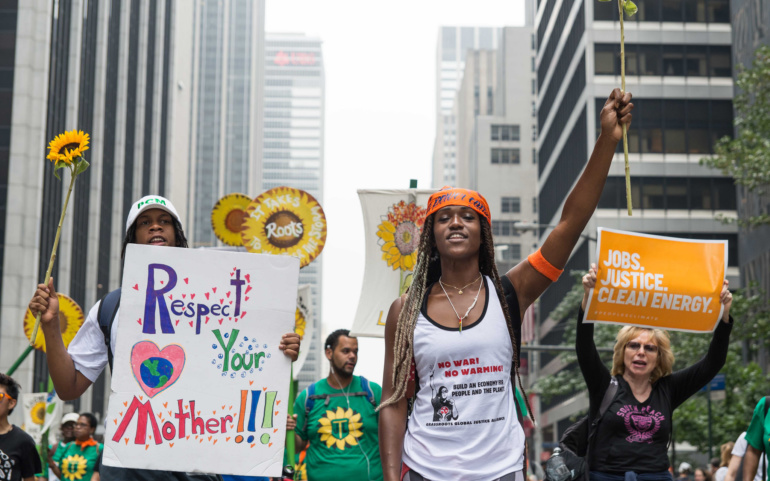Written by Ghizal Adina.
Protecting the environment is not a novel concept for Afghans. So much of the economic welfare of Afghanistan is tied to the health and viability of the land as the majority of the population is dependent on farming and herding. So to nurture, to value the earth, is inherently tied to our ancestral identity. However, in the rapid urbanization of Kabul in recent years, the influx of Afghans into the city after years of drought, the destruction of agricultural land during the Soviet years, and in parallel the immigration of Afghans to primarily urban areas of the United States and Europe, our disconnect with the health of the earth is apparent.
Combined with western impositions of modernity, King Amanullah commissioned “Kabul Jadid” in 1923 as an attempt to modernize Kabul and emulate the Turkish. Amanullah wished to modernize the entire experience of Kabul, embodying modernization not only in physical surroundings through an experience of Beaux-Arts style urban design, electrification, and a railroad, but also through clothing, requiring Kabulis to dress in European-style clothing while in the public spaces of the capital. When we look at circulating images of Afghanistan’s “glory days” with European-style dress and people socializing in the capital, and we proclaim proudly that we too come from a place so familiarly western, let us think – where did our connection to the land go? What interests do internal and western powers have in severing our ancestral ties to the land in our visions of, and dependence on, western modernity?
Look no further than at how much Afghanistan’s natural resources have been extracted and how the land has been brutalized in just the last fifteen years. There is a special interest others have in our recent rejection and disconnect from the earth. This persists here in the United States by us; by people who do not understand the land, yet speak and act on the land. By those who implement technologies of dependence, without accountability, to address systemic problems related to water, soil, agriculture, and hygiene, to name a few. The disconnect that is being created is also seen in other victims of western imperialism.
Earth Day is more important today than when it was formed in the 1970s because the environmental systems of oppression and racism aren’t seen, tasted, and smelled like they used to be. Like most forms of racism, structures benefiting from the oppression of the land, and subsequently upon POC, are intentionally obscured and simultaneously manifested in violent ways. Consider the concept of fracking and the Dakota Access Pipeline. These structures are benefitting from violence upon the earth and the destruction of indigenous land while obscuring the conversation with concepts of “safe pipes” and “environmental review.” Yet, green movements are seen as the movements of college-educated white people who drive Prius’ and feel good about recycling. This has been done intentionally to avoid an intersectional approach to environmentalism. In the 1960s, a Harlem survey asked residents what they liked least about their neighborhood, and the number one response was that they did not have enough trees and plants. So how do we take information given to us by communities and reframe conversations about environmentalism to how POC, non-college educated, non-wealthy people relate to the land?

It is possible but requires taking a deeper look at the environment when considering issues of race, war, politics, design, and science. Problems in the world today can ultimately be traced back to climate change and resource scarcity. What is the driver of Elon Musk’s desire to colonize Mars, other than sheer curiosity and challenge? The realization that what we are doing to our environment on Earth cannot sustain us as a species. Syria? The civil wars in Syria were built upon years of conflict over natural water scarcity. Race? People of color, both in urban and agricultural communities, live in areas where pollution levels are toxic, in brownfields, or with no sewer infrastructure. On Earth Day, I challenge you to consider how issues that you are passionate about are tied to the environment.
Inasmuch as it is important to consider issues of the environment, it is also imperative to consider how climate change conversations can become manifestations of white supremacy. How can we be aware of how critical conversations about the environment are weaponized against us? Consider how topics like overpopulation are used to control and silence black and brown voices in voting spheres. How can we supplement general conversations about the use of plastic in poor communities to environmental racism? How can we redirect surface level discussions surrounding gentrification to brownfield redevelopment? How can we talk about water and sanitation infrastructure in a way that requires us to undertake a thorough study and understanding of the land and that holds us accountable? When we think about water, oil, grass, sky, trees, weather, soil, how can we think and talk about blood? The blood that should remain in our black and brown bodies and not be spilled on our land? That is what I challenge our community to do. First, however, we must acknowledge our intimate ties to the land as Afghans, as people of color, and as inhabitants of this planet.
Happy Earth Day.
Featured image copyright Annette Bernhardt.


Add Comment